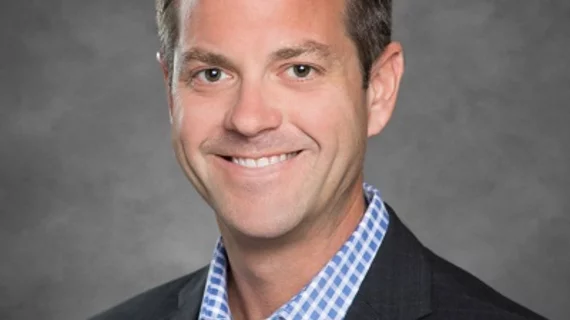Q&A with Experian exec: Embrace payment plans before going to collections
As patients become more responsible for costs with high-deductible health plans, healthcare finance professionals may be sending more and more bills to collection agencies, but offering more options for a patient to pay may be more beneficial to the provider in the long run.
Jason Considine, senior vice president of patient collections and engagement at Experian Health, argued at the Healthcare Financial Management Association (HFMA) conference in Orlando that providers should first rely on leveraging data and crafting flexible payment options before paying any contingency fees to collectors. He spoke with HealthExec about mistakes providers are making with their collection practices and what data they need to improve the process.
HealthExec: What are some of the deficiencies you see in how providers deal with patients who can’t pay their bills in full?
Jason Considine: I think it’s the lack of data and when they choose to take action with patients in the process. For example, high deductible patient comes in, they have a $5,000 bill, the hospital sends them a statement for $5,000, patient can’t pay the bill. Thirty days elapse, and then they send the second statement. Patient doesn’t pay, another 60 or 90 days goes by, and then it ends up as bad debt.
The first thing a (collection) agency does is put that patient on a payment plan. So now the hospital’s spent a bunch of money sending statements, and they’re paying a contingency plan for this payment plan when, if we go back to the first step, through the use of data, we know that a patient can’t pay that bill, but they could pay $100 a month or $250 a month. If we proactively engage the patient and put them on a payment plan, they eliminate three or four statements, and they eliminate that contingency fee. A lot of it is just more effective use of tools that are widely available in the marketplace and, most importantly, using data earlier in the process.
Do they need data from outside the healthcare system or the electronic health record?
It’s things like a propensity to pay score, a healthcare-specific credit score. One thing we see from patients is they often pay their doctor last. You might see them have a relatively solid retail credit score, but they’re not so good at paying their doctor. We know that data and we can leverage it earlier in the process. We also know their income and household size, which are the key determinants of whether they’ll qualify for financial assistance with a healthcare organization, so we can help them get on the right pathway using the data earlier in the process.
What would you say to providers who just want the money as soon as possible, not in installments spread out, potentially, over several years?
I would make the argument that some of your patients can pay now, and there are tools we can leverage to improve that process and give them more ways to pay you, but we should also look at their data. If the patient can’t pay your bill and you’re going out to agencies anyway, you’re not going to make a difference by saying, “No, you just have to pay me now.” The way you’re going to influence that is get more flexible with your payment arrangements.
Are providers likely to collect more from patients in the long run if they offer a payment plan?
Patients like options is what I’ve seen. It really depends on the hospital’s strategy, how flexible they want to be, but for consumers, they like options. If you were going to Best Buy for a 75-inch TV and you can’t afford to pay $7,000 and walk out without a balance, how many different options do you have to buy that TV? Plenty. You can finance it for 12 months, 24 months, no interest—all those different options.
A lot of healthcare providers don’t do that. You have one option: Pay your $5,000 bill or I’m sending you to collections. The agencies, all they’re doing in a lot of cases, is putting you on a payment plan and doing something the hospital could have done months before.
I’ve also heard you discuss the importance of patient portals, but many providers will say patients aren’t using them. How does that hurt collections?
The number one reason a patient goes to the hospital’s page or portal is to pay a bill. I think a lot of the “patient portal is dead” talk is more on clinical side. I don’t think we’ve reached the level of engagement with the patient clinically through portals that Meaningful Use was designed to accomplish, but it’s still the main reason patients go to a hospital’s portal, is to pay a bill.
With that being said, I would say we have a case of “portal-itis” in healthcare. There’s a lot of different portals and we steer the patient to different experiences, which makes it clunky and confusing. So I think there’s opportunity for improvement there. Using mobile tools is where we’ve really seen the shift. A lot of consumers don’t want to go to a website they can’t access on their phone or through an app.

